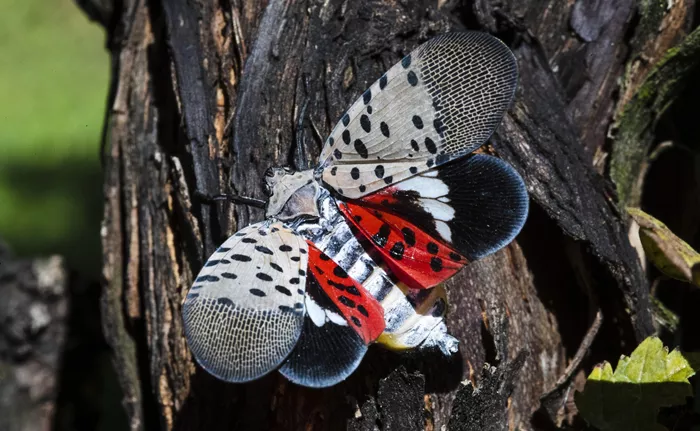As summer approaches, Virginia officials are urging residents to watch for invasive insects that threaten native plants and agriculture. The Virginia Department of Forestry and Department of Agricultural and Consumer Services are preparing for the spread of pests like the spotted lanternfly, hemlock woolly adelgid, emerald ash borer, and spongy moth.
The spotted lanternfly, first found in Virginia in 2018, feeds on crops such as grapes and hops, posing risks especially to vineyards. Its egg masses, which look like cracked mud, hatch in early spring. While currently more of a nuisance than a serious threat, officials continue monitoring its spread.
Spotted Lanternfly: Look for egg masses that look like cracked mud, usually on tree trunks, fences, or outdoor furniture. Nymphs are black with white spots and turn red as they grow. Adults have colorful wings with black spots and red underwings.
The emerald ash borer, established since 2008, attacks native ash trees by feeding under their bark, often killing them. Preventive pesticide treatments are recommended to protect these trees before damage occurs.
Emerald Ash Borer: This small, shiny green beetle is about half an inch long. Signs of infestation include thinning leaves and bark splitting on ash trees.
The hemlock woolly adelgid, present since the 1950s, harms eastern hemlock trees by sucking nutrients, causing needle loss and tree decline. Chemical treatments can control this pest, which has two generations per year, with spring being a key time to spot infestations.
Hemlock Woolly Adelgid: Check the undersides of hemlock branches for tiny white, cotton-like egg sacs. Infested trees lose needles and look unhealthy.
Spongy moth caterpillars feed on many hardwood trees, especially oaks, sometimes causing large-scale defoliation. While one year of defoliation is usually not fatal, repeated damage combined with stress like drought can weaken trees over time.
Spongy Moth Caterpillars: These caterpillars have distinctive red and blue spots along their backs and can be found in large numbers on oak and other hardwood trees.
To help protect Virginia’s forests, the Department of Forestry offers financial aid for pesticide treatments and encourages landowners to act early. Some treatments involve soil applications, while others require specialized tree injections best done by certified arborists.
Residents can help by learning to identify invasive pests and plants, reporting sightings, and supporting efforts to protect Virginia’s natural landscapes.
Tips for Protecting Your Garden and Supporting Native Plants
Plant Native Species: Choose flowers, shrubs, and trees native to your area. Native plants are better adapted to local conditions and provide food and shelter for native insects and birds.
Avoid Invasive Plants: Learn which plants are invasive in your region and avoid planting them. Invasive plants can crowd out native species and harm local ecosystems.
Report Sightings: If you spot invasive insects or plants, report them to local agricultural or forestry departments. Early detection helps control their spread.
Use Integrated Pest Management: If pests appear in your garden, try natural controls first, like encouraging beneficial insects (ladybugs, lacewings) before using chemicals.
Support Local Conservation Efforts: Participate in community planting events or workshops to learn more about native gardening and invasive species management.


